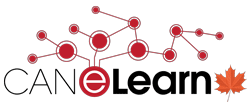We noticed that the researchers at the CANeLearn-partnered State of the Nation: K-12 e-Learning in Canada project posted this announcement yesterday.
The first issue paper, Virtual High School K-5 Course Writing Project, written by Steve Baker and Kimberley Loebach of Virtual High School (VHS), describes insights into the processes undertaken by this private Canadian K-12 school that won the contract for a major course writing and online development project for a large US-based online school. VHS has over 60 fulltime staff and contractors working on the project, all housed in the small town of Bayfield, Ontario (population 900 in the winter). This is a first for a K-12 distance, online, and/or blended learning program based in Canada, and a testament to the experience and ability of Canadian K-12 programs to undertake major course development work for online schools in the US or anywhere else in the world for that matter. Some of the insights learned by the development team include managing teams, client expectations and communications, effective design and incorporation of multimedia. The VHS project is the one of the largest content development projects taking place in the K-5 sector, let alone in an 18-month time frame. VHS committed enthusiastically to the project, and the staff have gained priceless experience and sharpened countless skills. Although a stressful, demanding project, VHS is now well poised for the next iteration. Read more at http://k12sotn.ca/papers/virtual-high-school-k-5-course-project/
The second issue paper, Online Credit Recovery at the Alberta Distance Learning Centre, discusses how students enrolling in Alberta Distance Learning Centre (ADLC) in the second semester of high school (between February 15 to June 15) are completing courses in less time than those that sign up for the typical September to June school year. The increase in the mid-year enrolments has been attributed to the credit recovery options that ADLC provides whereby students build on the skills mastered previously to earn course credit without redoing a course in its entirety. Students enroll in the credit recovery option to fill in program graduation gaps created through such things as health/attendance issues, school timetable conflicts, or prior course failure. As such, the second semester enrolment option enables students to fill graduation program gaps prior to June school year end, and this is likely the reason students gain a full course credit in the shorter time period than their peers who sign up in September. Read more at http://k12sotn.ca/papers/online-credit-recovery-at-the-adlc/
For these, and all of the previous issue papers, please go to http://k12sotn.ca/papers/
